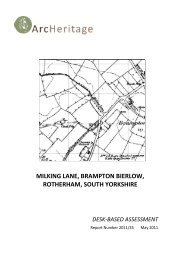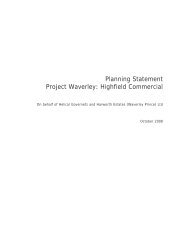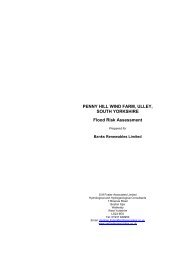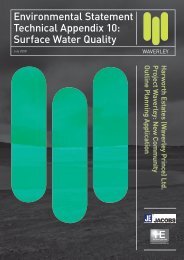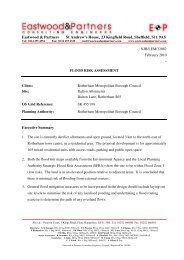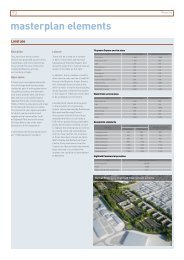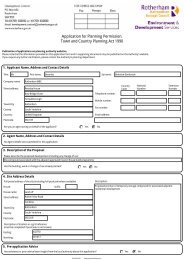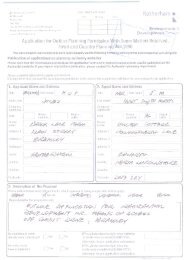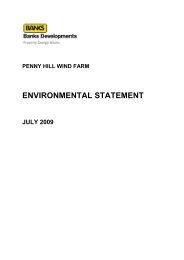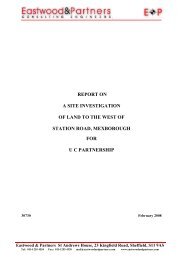environmental statement - Rotherham's Online Application for ...
environmental statement - Rotherham's Online Application for ...
environmental statement - Rotherham's Online Application for ...
You also want an ePaper? Increase the reach of your titles
YUMPU automatically turns print PDFs into web optimized ePapers that Google loves.
7.30 Two transects were surveyed which give an overview of activity across the<br />
habitats within the study area. A total of 15 bat passes were recorded<br />
over both surveys and comprised of 3 species. These were common<br />
pipistrelle (Pipistrellus pipistrellus), soprano pipistrelle and brown longeared.<br />
Bat activity occurred throughout the study area with no<br />
concentrations of activity associated with particular features. The linear<br />
features that were followed did not show evidence during these surveys of<br />
being flightlines <strong>for</strong> large numbers of commuting bats.<br />
7.31 The trees identified during the Phase 1 Habitat survey are semi-mature<br />
oak, with mature ivy growing on the trunks and branches, with possible<br />
cracks in the upper branches. No bat roosts were detected within these<br />
trees. The buildings at Ulley Beeches consist of a house, stables, old<br />
stable block, hay/cow sheds and a small brick built out-building. The<br />
house consists of painted brickwork with no visible gaps, an intact tiled<br />
roof, and double glazed windows, and is considered to have low potential.<br />
The stables are brick built with a corrugated roof and are considered to<br />
have low potential. The old stable block is also brick built with a<br />
corrugated roof, but there are visible gaps in the brickwork and this<br />
building is much higher roofed. It is considered to have medium potential,<br />
but there is a bright security light on the northern side of this building which<br />
might discourage roosting bats. The hay/cow sheds are of metal<br />
construction and considered to have low potential. The small brick built<br />
out-building has a slate roof and has visible gaps in the brickwork, and is<br />
considered to have medium potential. Bats were recorded <strong>for</strong>aging along<br />
the hedgerow to the east of the buildings and around the buildings during<br />
the dusk survey. A smaller amount of commuting activity was recorded<br />
during the dawn survey. No bats roosts were detected in these buildings.<br />
Badger Survey<br />
7.32 The <strong>for</strong>aging and commuting habitat available within the study area is<br />
considered to be of average to good quality. Foraging habitat exists within<br />
the arable fields, along the field margins, in the small areas of grassland,<br />
and woodland. Few signs of territorial activity (latrines) and commuting<br />
were found throughout the study area, however detection was inhibited by<br />
the dense vegetation at the time survey. Two setts were found within the<br />
study area. These included a main sett and a outlier/subsidiary sett.<br />
Details of the location of the badger setts are confidential under the<br />
Protection of Badgers Act 1992 and are there<strong>for</strong>e not given in the main<br />
body of this report. Full details and the badger survey results map are<br />
given as a confidential annex, which should not be passed to third parties<br />
or be in the public domain.<br />
Otter Survey<br />
7.33 A number of drainage ditches were identified that were considered<br />
unsuitable <strong>for</strong> otter due to factors such as lack of water, pollution,<br />
stagnation, and being completely overgrown with vegetation or algal<br />
growth. Two watercourses were considered suitable <strong>for</strong> otter within the<br />
176<br />
Penny Hill Wind Farm<br />
Environmental Statement



